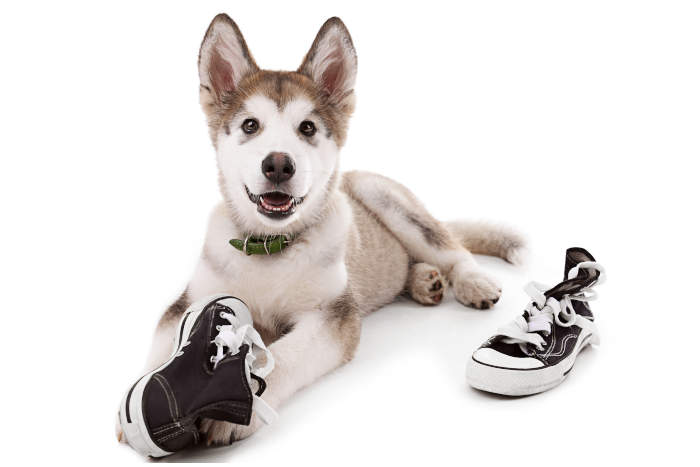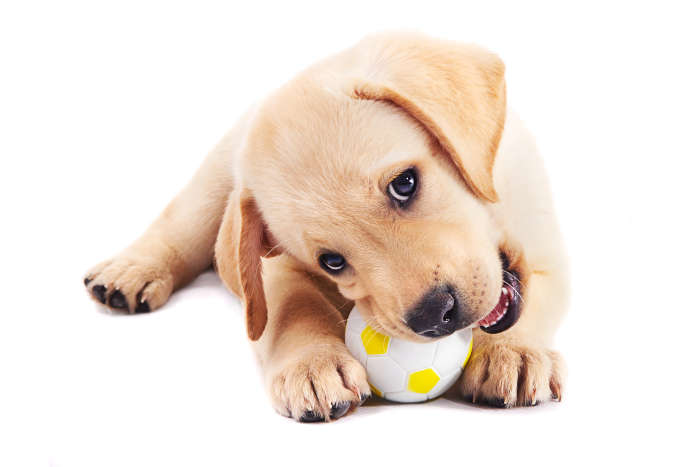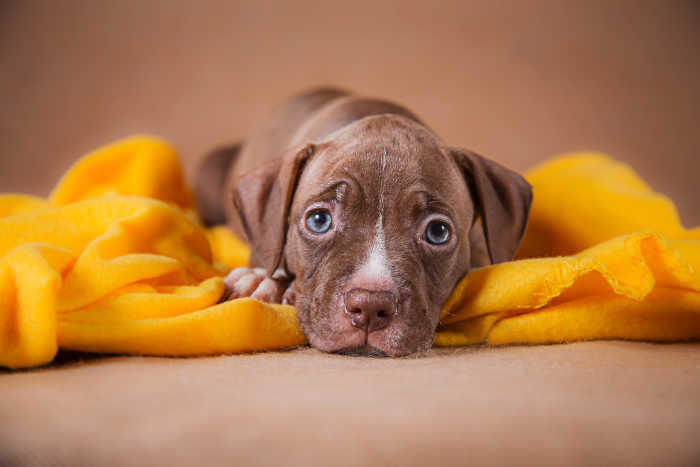As adorably cute as puppies are, and despite all the affection we have for them, when they begin to chew up everything in sight they feel more like a mischievous little gremlin. Finding your puppy at the far end of a path of destruction, chewing away at your favorite pair of shoes, your TV remote, or worse still your furniture, is less than appealing.
If you’re here reading this, chances are that you’ve already had to deal with some chewing, in fact chewing is a perfectly normal behavior in puppies, it’s a means of exploring their environment. However, inappropriate and excessive chewing directed at your personal property, not only leaves your possessions in a sorry state, if left uncorrected it can lead to medical issues for your pup. Not to mention it can also put stress on the human-puppy bond.
At around four to six months of age your puppy’s adult teeth start pushing through and gradually begin to replace the puppy teeth. At this age, chewing tendencies increase as your puppy tries to ease the discomfort of the painful process known as teething. Inappropriate chewing tends to occur a lot more during this teething stage, and if you do not address the issue now, it can turn into an ongoing problem which becomes harder to correct further down the line. With that in mind, let’s go through a very effective five step approach to putting an end to any undesirable chewing tendencies – once and for all.

Step 1: Puppy Proof & Set Boundaries
Puppies are inquisitive by nature and eager to explore the world around them. To you it’s just a shoe, or a DVD case, but to your puppy it’s something new and exciting. That coupled with the urge to ease the unpleasant teething process produces an irresistible need for your puppy to perform a little oral investigation.
Your first task is to make sure that any items you want to keep safe are out of reach. Likewise, any items that pose a danger to your puppy (such as sharp objects) must be kept well out of reach.You’ll also want to make dangerous electrical cords inaccessible, or at least, puppy proof them using cord protectors specifically designed to resist animals biting on them.You should also look to set a few boundaries. Allowing your pup to roam your home freely is a recipe for disaster. A puppy is like a toddler, for their safety and the safety of your valuables, their environment needs to be controlled.Restrict access to any rooms which may pose a danger to your puppy (for example anywhere you store household chemicals), or which are hard to keep clear, like a child’s room full of kids toys.Keeping doors closed or installing dog/baby gates shuts off entire rooms from their chewing and gives you a smaller area to patrol.
Note: Since there are a number of household plants which are toxic to dogs, it’s also best to keep all plants out of reach, at least while chewing urges are at an all time high.
Step 2: Provide Suitable Alternatives
Now that you’ve puppy proofed your pups environment and set a few boundaries, it’s time to provide your pup with a few suitable alternatives to sink his teeth into. Since every dog has their own personal preference, you’ll have to experiment to find out exactly what chews and chew toys your pup really enjoys getting his teeth into.
We recommend trying out chews like Greenies, Nylabones and dental chew sticks to encourage appropriate chewing. Not only are they perfect for your pup to gnaw and nibble at, they also improve oral health and leave behind a fresher breath.
Note: We strongly advise against giving your dog chicken bones. Bones can splinter and cause serious internal damage (such as puncturing the gastrointestinal tract).
We also don’t advise you give your puppy any items that resemble anything you don’t want them chewing on, for example – old shoes. A puppy won’t be able to distinguish between which shoes are acceptable and which ones are off-limits.
When it comes to chew toys, a classic Kong toy is a great place to start. It’s made from a natural rubber, it’s extremely resilient to chewing, and it can be stuffed with treats to keep your pup busy for an extended period of time.
The classic Kong comes in many different sizes, make sure to grab the appropriate size for your dog.
Tip: It’s a good idea to rotate chew toys periodically so your puppy doesn’t get bored chewing and playing with the same thing day after day.
Step 3: Engage Your Puppy Through Playtime
No doubt this is one of the best steps, and super fun for both of you. As far as your pup’s concerned (at least while he’s not thinking about food), playtime is the best time! Not only does your puppy love you two playing together (allowing you to reinforce the human-puppy bond), it’s also a great way to get him used to his chews and toys. Also, it’s fantastic for using up some of that excess energy he has all bundled up inside. Short and sweet play sessions are best. Five to ten minute sessions, three times a day with your pup will work wonders at engaging and stimulating his puppy needs. Always remember, your pup’s toys are only half as fun when playing by himself.
If you’d like to go beyond fetch and become a playtime master, check out these fun games for your dog.

Step 4: Schedule in Regular Exercise
Puppies buzz with what seems like an endless amount of energy. All that energy needs a positive outlet so it’s not directed towards things like your furniture. Make sure your puppy gets a good amount of exercise and fresh air everyday. For puppies, a good rule of thumb is 15-30 minutes, up to twice a day.
As they get older you’ll want to be at the higher end there, and remember that high energy breeds like Border Collies, Siberian Huskies and Labrador Retrievers require even more exercise as they enter adulthood. If you have access to a fenced-in yard to let them lose, that’s great, but there’s no substitute for an exciting dog walk that gives your pup the opportunity to explore new places, interact with new things, and socialize with people and other dogs.
Step 5: Discourage Undesirable Chewing
Great news! By following the previous four steps, you would’ve already minimized a great chuck of mischievous tendencies, set healthy boundaries and provided a good amount of stimulation to combat inappropriate chewing.
Just in case you’re still finding your pup gnawing away at something he shouldn’t be …Separate him from the object while delivering a negative verbal marker like “Bad boy!” Then, direct him towards an acceptable chew or chew toy, making sure to praise lavishly as he begins to chew away.
With some consistency your puppy will eventually learn what’s acceptable to chew on, and what is not. If you’d like to go one step further, you could always use a dog deterrent spray on any inappropriate items your pup just can’t seem to stay away from.
Additional Thoughts
Besides teething, there are a few other reasons a puppy’s chewing tendencies can slide into overdrive and lead to inappropriate chewing. Boredom is one of them! Puppies need attention and require physical and mental stimulation, if they’re not getting enough, they tend to gravitate towards destructive behaviors.
Separation anxiety is another reason, and since this is an important topic in itself which requires further explanation, we’ll get an article out soon to cover this. But for now, just bear in mind that when you leave your puppy alone, he doesn’t understand why you’ve suddenly disappeared. Your puppy may be young, but to him you’re already a big part of his life.
When you’re gone (even if only for a few hours), it can cause your puppy real distress, causing him to chew excessively.
Lastly, seeking attention is yet another reason a puppy will sometimes chew inappropriately. For example, if you’ve ever chased your pup after catching him gnawing away at your favorite pair of shoes, he may have inadvertently learned that this is a great way to capture your attention. Just follow all the steps we talked about previously to combat the “inappropriate” chewing.
In closing, always remember to be patient, be consistent with the steps above, and never get mad at your pup for making mistakes or chewing the wrong things.






